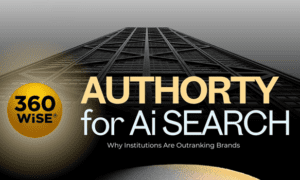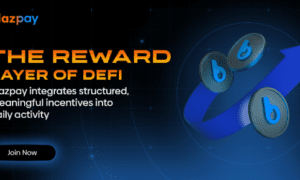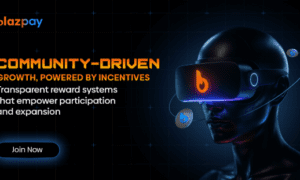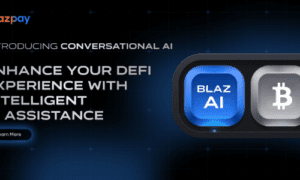The creation of conversational interfaces has traditionally been a complex, resource-intensive endeavor requiring specialized expertise in conversational design and natural language processing. Developers typically spend weeks or months manually identifying user intents, defining data slots, and crafting sample utterances. The Conversational Bot Blueprint Generator technology aims to revolutionize this process by automatically generating bot designs from existing conversation data, dramatically reducing development time and complexity.
The Conversational Bot Blueprint Generator functions as a capability that allows developers to leverage existing human-to-human conversation transcripts as the foundation for chatbot design. Rather than starting from scratch, the Conversational Bot Blueprint Generator analyzes call center transcripts and automatically recommends a complete bot framework including intents (user goals), sample utterances (varied ways users express those goals), slots (specific information needed), and slot types (categories of information). This approach helps developers bypass the initial conversational design hurdles while significantly accelerating the overall development timeline.
The technology operates through a sophisticated pipeline that processes conversation data through several stages. Initially, the Conversational Bot Blueprint Generator accesses conversation transcripts stored in the customer’s storage bucket from their contact center. This blueprint can filter conversations by date range, prioritize redacted transcripts over non-redacted versions, and convert all transcripts into a standardized format for processing.
Once the data is pre-processed, the Conversational Bot Blueprint Generator employs a sophisticated multi-stage natural language understanding pipeline to discover intents. At the core of this process is Dialog Act Classification (DA), which uses a fine-tuned RoBERTa model to classify each conversation turn into specific functional categories. The system identifies crucial dialog acts such as “InformIntent” (when users express their goals), “ElicitSlot” (when agents request specific information), and “InformSlot” (when users provide requested information). This classification is essential for organizing the raw conversation data into structured patterns that can form the basis of a conversational interface. The model is trained on large-scale multi-domain dialog datasets to ensure robust performance across different business contexts.
Following dialog act classification, the system implements Intent Clustering on utterances identified as “InformIntent.” This leverages a state-of-the-art sentence encoder (Sentence BERT with DistilRoBERTa encoder) trained on large-scale paraphrasing datasets to generate high-dimensional vector representations of each utterance. These embeddings capture the semantic meaning of user expressions, allowing the system to group functionally similar utterances using k-means clustering algorithms. Multiple clustering iterations with different parameters are run to identify the optimal granularity of intents, balancing specificity against generalization. The system then employs a dynamic ranking approach that allows developers to provide real-time feedback on intent relevance, influencing which intents are surfaced from clusters generated with various parameters. Each intent is named using either a sequence-to-sequence model or a Role labeling, Concept And Pattern mining (RCAP) approach, which analyzes the linguistic structure of utterances to extract meaningful, human-readable intent names.
After identifying intents, the Conversational Bot Blueprint Generator implements a multi-step process to mine conversations for slots and slot types. Rather than focusing primarily on user turns (which may contain redacted personally identifiable information), the system analyzes agent turns classified as “ElicitSlot” – recognizing that trained agents consistently request the specific information necessary to resolve user intents. These agent prompts are clustered using similar sentence embedding techniques as for intents, creating coherent groups of prompts that elicit the same type of information. Each slot cluster is then classified using a fine-tuned prompt classifier that distinguishes between built-in slot types (dates, numbers, locations) and custom slot types (product categories, service types). This approach enables the system to induce multiple distinct slots even when they share the same type – for example, distinguishing between “DepartureCity” and “ArrivalCity” though both are location types.

For slots classified as custom types, the system employs an extractive question-answering model (fine-tuned from RoBERTa on SQuAD 2.0) to extract relevant values from user responses with the “InformSlot” dialog act. This same model facilitates the generation of carrier phrases for slots by enabling the substitution of extracted values with appropriate slot placeholders in sample utterances. The link between slots and intents is determined through statistical co-occurrence analysis – calculating the proportion of conversations in which specific slot prompts appear alongside each intent and applying appropriate thresholds. This comprehensive approach produces a coherent ontology where slots are properly associated with the intents that require them, and slot types accurately categorize the extracted information.
To ensure the bot can recognize various ways users might express their intents, the Conversational Bot Blueprint Generator implements an intelligent sample utterance selection and enhancement pipeline. This process begins with identifying the most representative and diverse utterances from each intent cluster based on both frequency and semantic coverage. The system applies a specialized algorithm that balances common expressions with edge cases to ensure robust intent recognition. Once candidate utterances are selected, they undergo delexicalization – a process where specific slot values are replaced with slot references. This critical transformation converts concrete expressions like “Book a flight to Chicago on December 15th” into parameterized templates such as “Book a flight to {City} on {Date}” that can generalize to new inputs. The delexicalization employs the same extractive question-answering model used for slot value extraction, ensuring consistency across the bot definition.
To further refine the bot recommendation, the system implements a sophisticated ranking algorithm that evaluates intents based on multiple quality signals including cluster homogeneity (how similar utterances within a cluster are), cluster separation (how distinct each intent is from others), frequency of occurrence, and dialog context consistency. This multi-factor approach prioritizes the most reliable and coherent intent patterns for developers reviewing the recommendations. The system also performs automated deduplication of intents and slots based on name similarity and semantic overlap, preventing redundancy in the recommended bot definition. The final output is organized as a complete conversational model that links intents, sample utterances, slots, and slot types into a cohesive structure ready for developer review.
The developer experience with the Conversational Bot Blueprint Generator is streamlined and intuitive. The process begins when a developer provides access to a storage bucket containing conversation transcripts. The Conversational Bot Blueprint Generator then analyzes these conversations, which can take up to two hours depending on data volume. Upon completion, developers can review the recommended bot design through a dedicated interface, examining discovered intents, sample utterances, slots, and the associated transcripts that influenced each element. Developers maintain complete control, selecting which elements to include in their final bot and making manual adjustments as needed before importing the selected components into their bot for further refinement and deployment.
Internal testing has demonstrated the Conversational Bot Blueprint Generator’s effectiveness in reducing bot development time. Key performance metrics include an average transcript coverage of 86% across datasets, high precision for the top recommended intents, intent naming quality of 83%, and sample utterance coherence of 86%. Perhaps most significantly, the Conversational Bot Blueprint Generator has shown time savings of 10-15 days compared to traditional manual bot creation processes.
From a technical implementation perspective, the Conversational Bot Blueprint Generator leverages several cloud services in its architecture. The system’s core components include a Control Plane that manages API requests and workflows using serverless functions and state machines, Model Hosting through managed machine learning services, Data Storage utilizing secure object storage for transcript data and bot recommendations, and robust security implementations using role-based access for secure access to customer data.
The typical data flow begins when a customer initiates a bot recommendation through the service console. This request is processed through an API Gateway, triggering a workflow that retrieves data from the customer’s storage bucket using the provided access role. The data undergoes pre-processing before being passed to machine learning models for analysis. Results are then stored securely and made available through APIs, with the option to automatically add discovered intents and slot types to the bot if desired.
While the Conversational Bot Blueprint Generator represents a significant advancement in automated conversational design, the development team has identified several areas for ongoing improvement. These include enhanced custom slot type identification and quality, improved delexicalization of sample utterances, better handling of multi-turn conversations, support for additional transcript formats, and more sophisticated intent abstraction and merging techniques.
The Conversational Bot Blueprint Generator represents a major step forward in democratizing conversational AI development by removing significant barriers to entry and accelerating the development process. By allowing developers to transform existing conversation data into valuable conversational AI assets, it offers organizations with call center data a compelling opportunity to improve customer service efficiency and quality. While the technology continues to evolve, it already demonstrates considerable value in reducing both the time and specialized expertise required to create effective conversational interfaces.


































